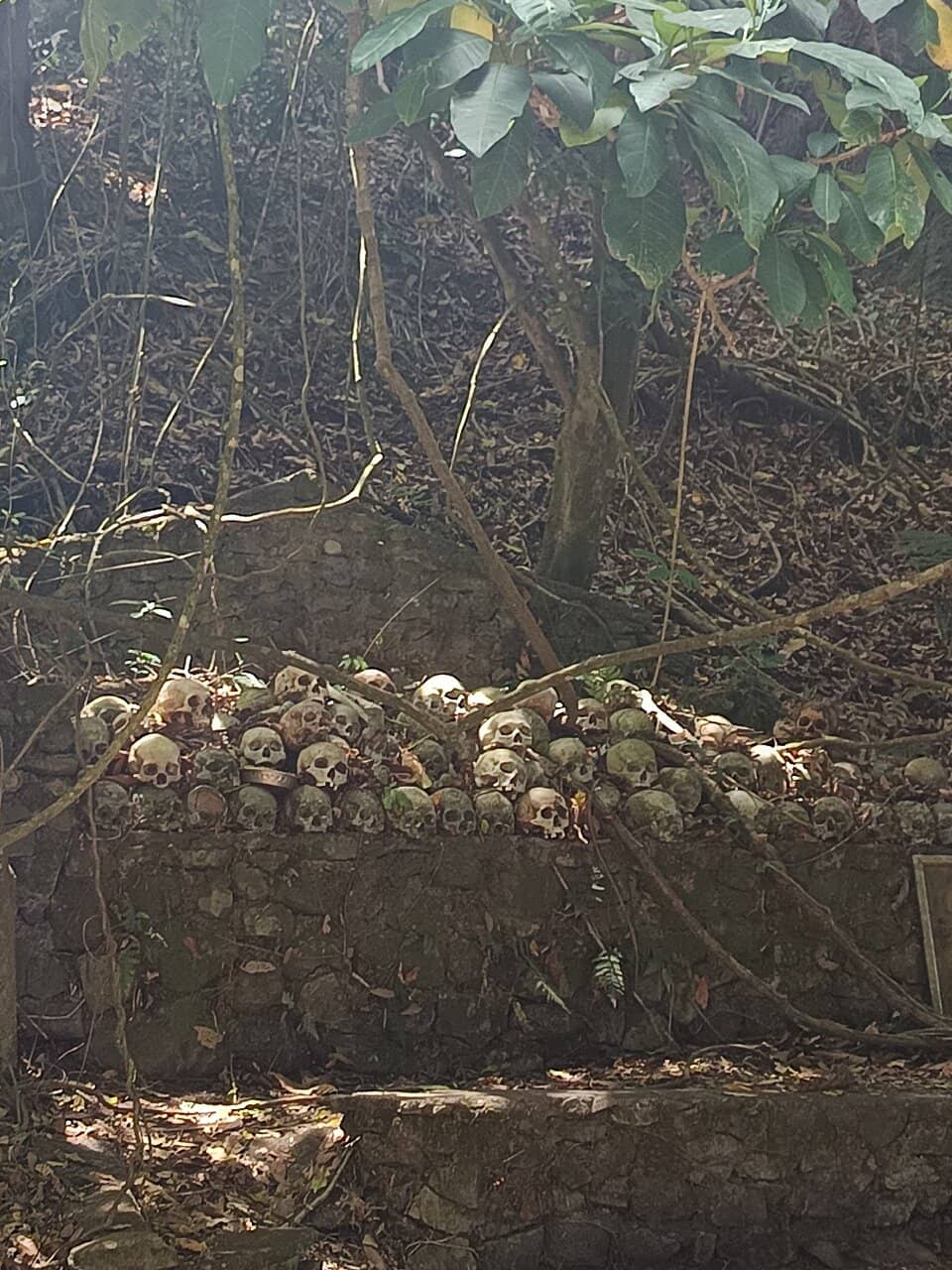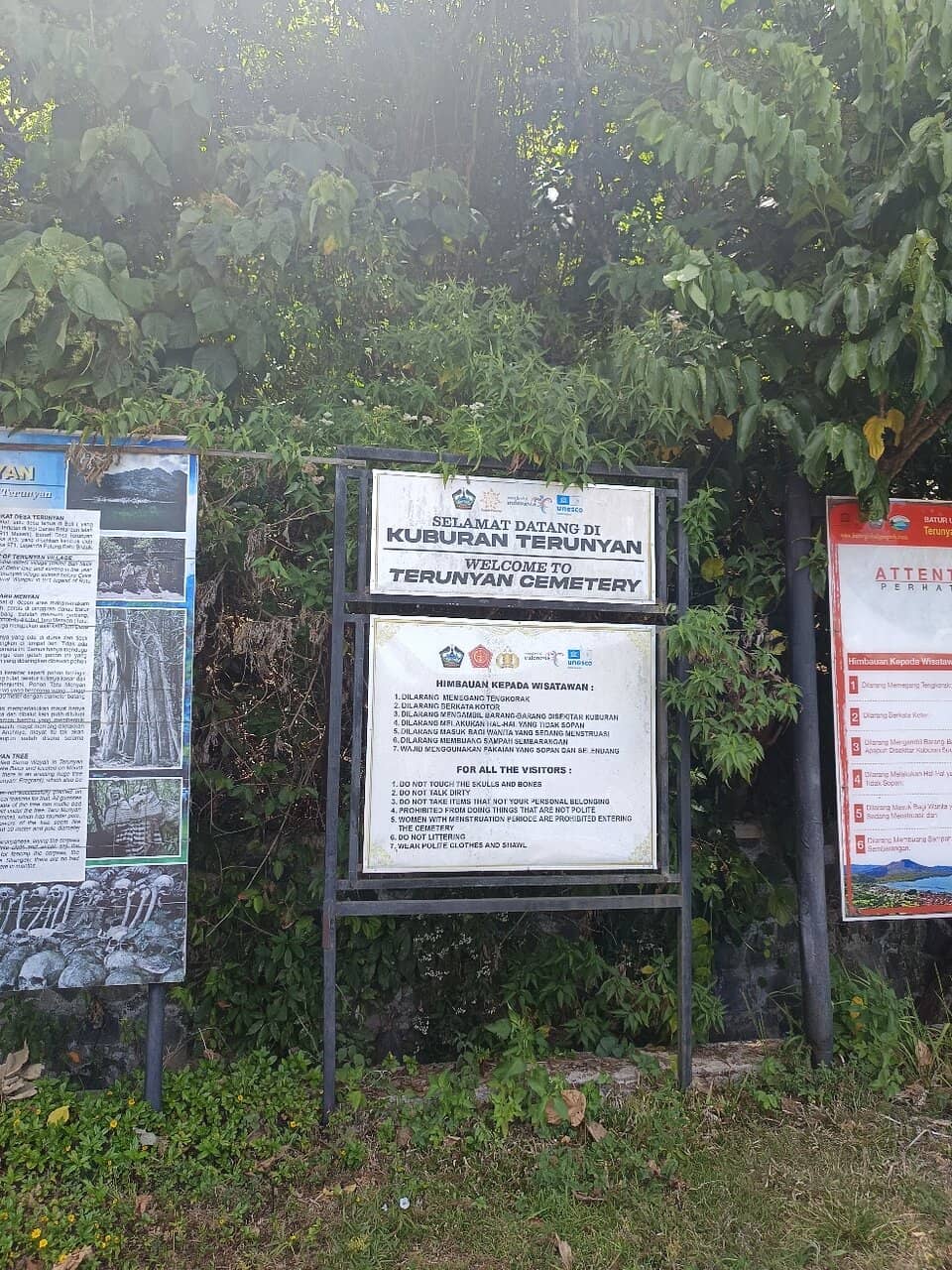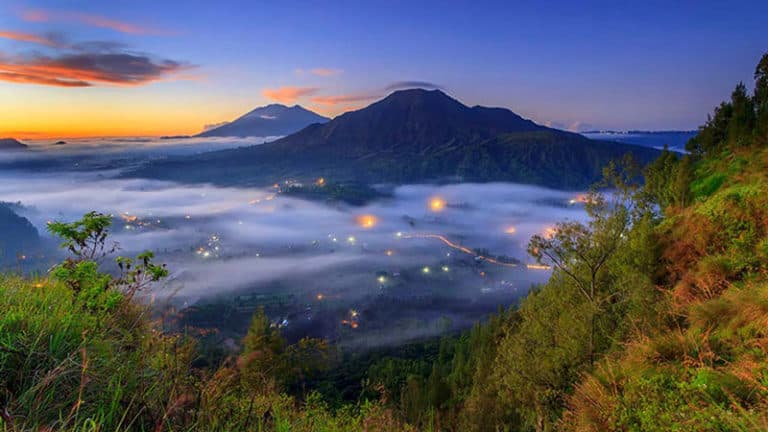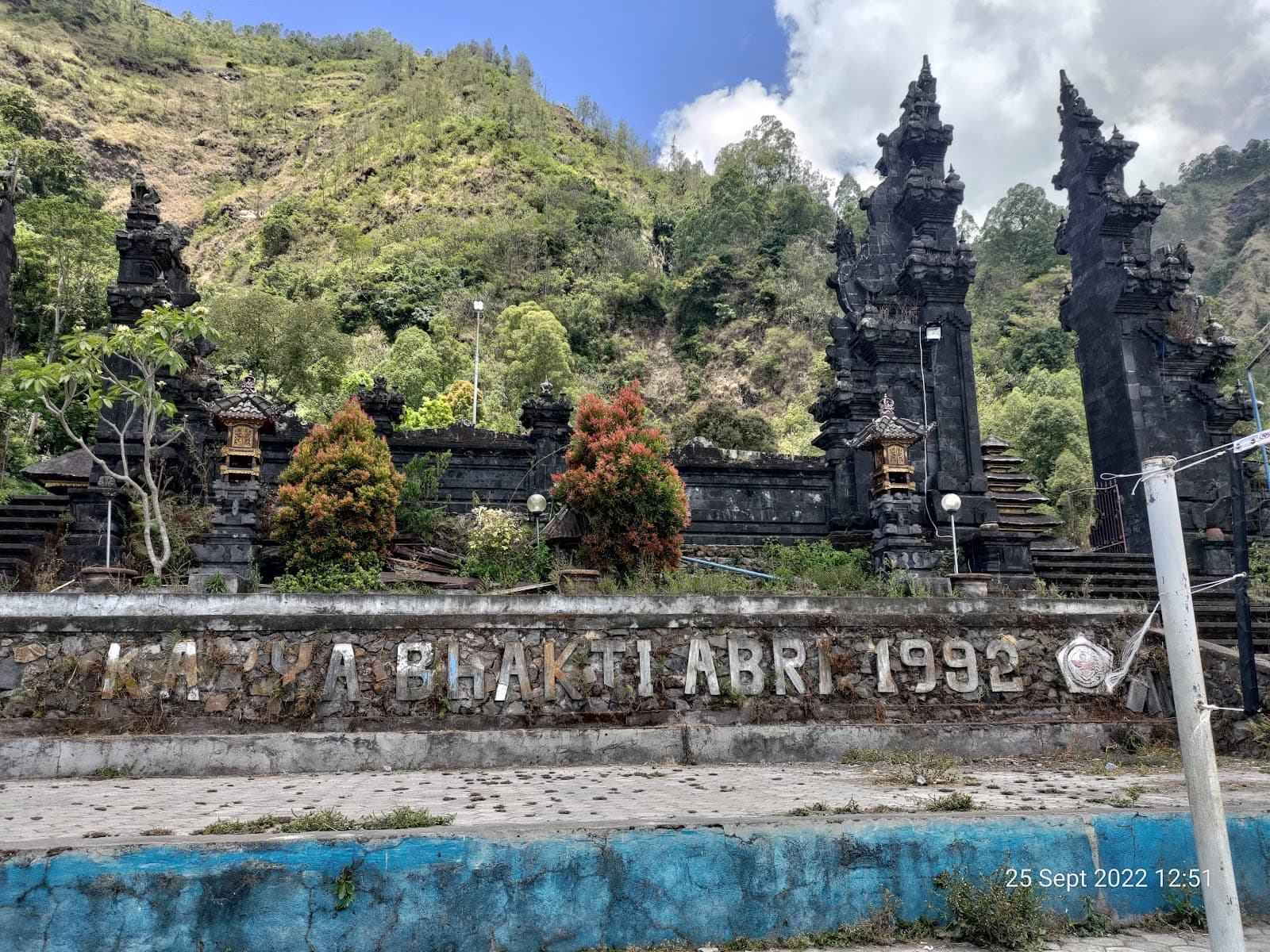
Trunyan Cemetery
Witness ancient Bali Aga burial rites where bodies decompose naturally under a fragrant tree, accessed by boat across Lake Batur.

Highlights
Must-see attractions

Social
From TikTok & Reddit
Best Time
Calm lake, fewer crowds

Trunyan Cemetery
Best Time
Calm lake, fewer crowds

Highlights
Must-see attractions
Witness ancient Bali Aga burial rites where bodies decompose naturally under a fragrant tree, accessed by boat across Lake Batur.
"A haunting yet fascinating cultural experience, confronting but truly interesting."

Negotiate Boat Fare 💰
Boat rides are expensive! Negotiate firmly, especially if solo. Groups can split costs.
Respect the Dead 🙏
Never touch or take bones. No photos of bones. This is a sacred site.

Highlights
Discover the most iconic attractions and experiences

The 'Mepasah' Burial Site
Trunyan Cemetery
Witness the unique Bali Aga tradition of bodies left to decompose naturally under the fragrant Taru Menyan tree.

Skull Platform
Trunyan Cemetery
A chilling yet fascinating stone platform displaying skulls of those who have completed natural decomposition.

Trunyan Village & Temple
Trunyan Village
Explore the culturally isolated Bali Aga village and its ancient Hindu temple before or after visiting the cemetery.
Plans like a pro.
Thinks like you
Planning Your Visit
Boat Ride Costs & Negotiation
Respectful Observation is Key
Best Times
Insider Tips
from TikTok, Instagram & Reddit
Negotiate Boat Fare 💰
Boat rides are expensive! Negotiate firmly, especially if solo. Groups can split costs.
Respect the Dead 🙏
Never touch or take bones. No photos of bones. This is a sacred site.
Go with a Driver 🚗
Local drivers can help negotiate boat prices and guide you.
Not for the Squeamish 🤢
Decomposing bodies are visible. Be prepared for a confronting experience.
Tips
from all over the internet
Negotiate Boat Fare 💰
Boat rides are expensive! Negotiate firmly, especially if solo. Groups can split costs.
Respect the Dead 🙏
Never touch or take bones. No photos of bones. This is a sacred site.
Go with a Driver 🚗
Local drivers can help negotiate boat prices and guide you.
Not for the Squeamish 🤢
Decomposing bodies are visible. Be prepared for a confronting experience.
Wear Comfortable Shoes 👟
You'll be walking around the village and cemetery area.
What Travellers Say
Reviews Summary
Trunyan Cemetery offers a confronting yet fascinating glimpse into the unique Bali Aga burial traditions. While the cultural significance is undeniable, the extremely high cost of the boat ride and the graphic nature of the site make it unsuitable for many. Visitors often find the experience short but impactful, provided they can navigate the logistical challenges and approach it with respect.
"This sightseeing location may not be for everyone as there are usually several decomposing corpses at the site. Additionally, there’s a pile of skulls which are reminiscent of the Killing Fields in Phnom Penh. Simply said, it’s not for the squeamish. Another barrier to getting to this site is the cost of the boat ride across the lake. The prices are seriously expensive for the twenty minute ride each way. If you’re in a group it’s doable. But as a solo traveler, the 800k IDR fee is something which needs to be considered before handing over your cash. Is the cemetery worth looking at? I would say that if you’re not doing a YouTube Video, then probably not. It’s a small site at which you’ll probably be there for no longer than fifteen minutes. To try and bolster the trip, they’ll take you to Terunyan Village first, to look at the Hindu Temple. The people who live there are descended from the original inhabitants of Bali. What was notable is their larger stature than the Balinese people you see around the tourist areas of the island. Note: The departure point for the boats is directly across the road from the ALFAMART LAKEVIEW convenience store (Google Maps).
Safe travels,
Mega."
Megaworld Asia
"Terunyan Village, a village on the shores of Lake Batur, Kintamani District, Bangli Regency is one of the oldest villages that can be said to still preserve the Bali Aga or old-Bali customs, before its acculturation with Hinduism-Buddhism culture and religion from India.
Unlike almost all areas in Bali where people who die are burned (this burial model is called "Ngaben" or fire burial), people who die in Terunyan Village are placed on the ground so that they will later decompose naturally by the wind (this burial model is called "Mepasah" or wind burial).
There is a local indigenous legend that there were 4 children of the King of Surakarta on the island of Java who traveled together to the island of Bali to find the source of the fragrant aroma that made them curious and in the end the eldest son managed to find that the aroma actually came from a tree called Taru Menyan in this village. Long story shortened, he then became the ruler of this village entitled Ratu Sakti Pancering Jagat and married a native princess of this village entitled Ratu Ayu Pingit Dalam. They were the ones who then made the rule that has become a tradition until now, namely to put every corpse of a deceased person under the Taru Menyan tree for the aroma can be neutralized so that this village is not easily known therefore it will be always safe from the dangers of invasion from other areas."
Aswin Nobby
"Terunyan Village Cemetery
“ No burials. No cremations. Just nature and mystery.”
Hidden on the edge of Lake Batur lies Trunyan, home to the Bali Aga people. We explored their eerie cemetery where bodies are left to decompose in open bamboo cages, said to be odorless due to a mythical fragrant tree. A haunting yet fascinating cultural experience.
We saw a 2-day-old body resting in a bamboo cage, exposed to the open air but surprisingly without any smell. This is thanks to the nearby Taru Menyan tree, which releases a natural fragrance.
Personal Belongings
Next to the body were the person’s favorite items, placed inside the cage as offerings and memories.
Skull Platform
A little farther away, we came across a stone platform covered in human skulls. Each one belonged to someone who had completed the cycle of natural decay—now honored and at peace."
Aesthetic Traveler
What People Like
What People Dislike
Frequently Asked Questions
🚇 🗺️ Getting There
Trunyan Cemetery is located on the eastern bank of Lake Batur. The only way to access it is by boat from Trunyan Village. You'll typically need to hire a local driver to take you to the village, and then negotiate with boatmen for the crossing.
The departure point for boats is often directly across the road from the ALFAMART LAKEVIEW convenience store in Trunyan Village.
The boat ride across Lake Batur to Trunyan Cemetery is relatively short, usually around 20 minutes each way.
Hiring a private driver for the day is recommended for easier access to Trunyan Village and assistance with boat arrangements.
Yes, you can drive to Trunyan Village, but you will still need to hire a boat to reach the cemetery itself.
🎫 🎫 Tickets & Entry
The main cost is the boat ride, which can be very expensive, ranging from 800,000 to 1.4 million IDR for a round trip, especially for solo travelers. There might also be small entrance fees for the village or temple. Negotiate prices beforehand.
No advance tickets are typically required. Payment is usually made directly to the boatmen and local guides upon arrival.
The cemetery is an active burial site and can be visited during daylight hours. It's best to go in the morning or early afternoon.
While the cemetery is the main attraction, there might be a small contribution requested for visiting Trunyan Village and its temple.
While you can technically take the boat, a local guide is highly recommended to understand the customs and navigate the area respectfully.
📸 📸 Photography
Photography of the decomposing bodies is strictly forbidden. You can take photos of the village, the lake, and the skull platform, but always be respectful.
The lake views, the unique village architecture, and the skull platform (from a respectful distance) offer compelling photographic opportunities.
There are no specific regulations mentioned, but it's advisable to avoid using drones over sacred sites and residential areas out of respect.
Morning light offers softer illumination and fewer crowds, while afternoon light can be dramatic.
A standard camera or smartphone is sufficient. The key is to capture the unique cultural aspects respectfully.
🎫 🤔 Onsite Experience
You'll see bodies laid out to decompose naturally, often in bamboo cages, under the Taru Menyan tree. There's also a platform with skulls and a 'rubbish dump' for remains and belongings.
Surprisingly, visitors often report no strong smell due to the Taru Menyan tree, which is believed to absorb or neutralize odors.
The Bali Aga are the indigenous people of Bali who maintain ancient customs and traditions predating the arrival of Hinduism-Buddhism. They are culturally distinct from other Balinese.
This mythical tree is believed to absorb the smells of decomposing bodies, making the cemetery less offensive and helping to keep the village hidden and safe.
A visit to the cemetery itself is quite short, perhaps 10-15 minutes. The overall trip, including the boat ride and village visit, can take a couple of hours.
🍽️ 🍽️ Food & Dining
Dining options are limited directly at the cemetery. You'll find more choices in Trunyan Village or back in the Kintamani area, known for its lake views.
It's unlikely you'll find vendors directly at the cemetery. It's advisable to bring your own water and snacks, or eat before/after your visit.
Local warungs (small eateries) in Trunyan Village may offer simple Indonesian dishes. For more variety, head to Kintamani.
If you choose to eat in the village, opt for well-cooked local dishes. However, many visitors prefer to eat in Kintamani for better facilities.
Vegetarian options might be limited in smaller local warungs. It's best to ask or stick to dishes like nasi goreng (fried rice) or mie goreng (fried noodles) which can often be made vegetarian.
For Different Travelers
Tailored advice for your travel style
👨👩👧 Families with Kids
💰 Budget Travelers
🧐 Culture Enthusiasts
📸 Photographers
Deep Dives
In-depth insights and expert knowledge
The Unique Burial Rituals of Trunyan
The most striking aspect of this ritual is the belief that the strong odors of decomposition are absorbed by the nearby Taru Menyan tree. This sacred tree, whose name translates to 'fragrant tree,' is central to the village's legend and its unique burial customs. The presence of this tree is said to neutralize the smells, making the cemetery surprisingly odorless and contributing to the village's perceived safety and isolation. Visitors often express surprise at the lack of smell, a testament to the efficacy of this ancient belief and practice.
Adjacent to the burial sites, you'll find a skull platform, a chilling yet fascinating collection of human skulls belonging to those who have fully decomposed. This area, along with the burial plots, forms a compact and confronting landscape that offers a profound glimpse into the Bali Aga people's relationship with death and the afterlife. It's a stark reminder of the cycle of life and the acceptance of natural processes.
Navigating the Costs and Logistics
It's crucial to negotiate the boat fare firmly before agreeing. Some travelers have reported instances of boatmen attempting to inflate prices or even staging mechanical issues to extort more money. Hiring a local driver for the day can be beneficial, as they often have established relationships with boatmen and can help negotiate better rates. The departure point for boats is typically near the ALFAMART LAKEVIEW convenience store in Trunyan Village.
Beyond the boat ride, be prepared for the overall experience. While the cemetery itself is small and can be viewed in about 15 minutes, the trip includes travel to Trunyan Village and a visit to its temple. The village offers a glimpse into the lives of the Bali Aga people, who are known for their distinct physical stature and cultural practices. The facilities, such as toilets, may be basic, so managing expectations is key.
Cultural Sensitivity and Photography Etiquette
Before taking any photos, especially of people, it's good practice to ask for permission. Be aware that the Bali Aga people are culturally isolated and may not be accustomed to constant tourist attention. The presence of decomposing bodies and personal belongings can be confronting, so approach the site with an open mind and a willingness to learn rather than just to capture sensational images.
Remember that the primary purpose of visiting Trunyan is to witness and understand a unique cultural practice. Focus on observing, learning, and appreciating the traditions rather than solely on documenting them. This respectful approach will ensure a more meaningful and ethical experience for both you and the local community.





Social
from TikTok, Instagram & Reddit